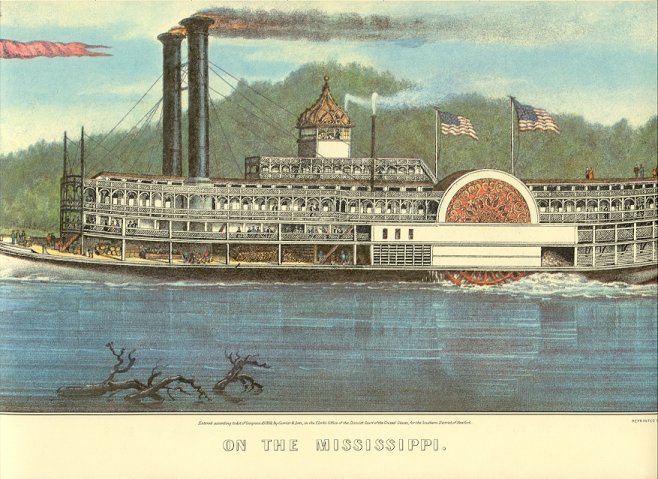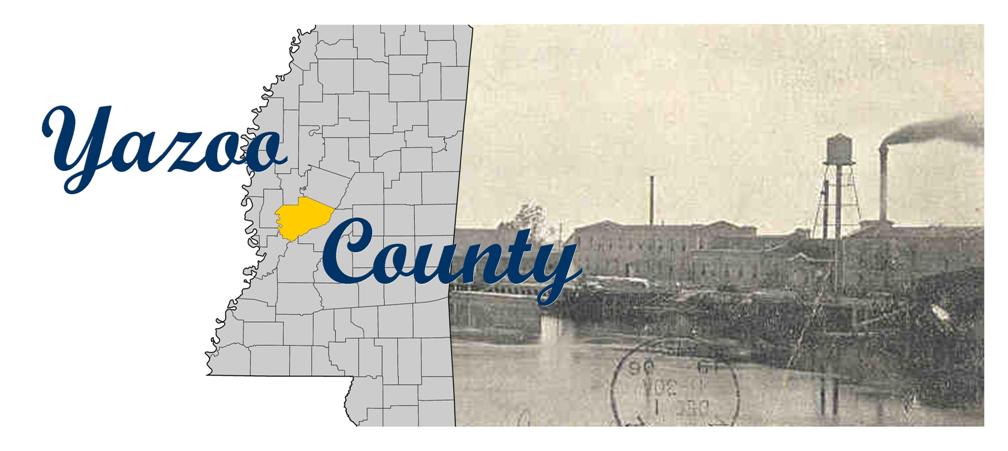|
Mississippi
Byways
By Jim Ewing
Jackson Daily News Staff
Writer
---- This spot, at the end of a short, almost indistinguishable dirt road in southwestern Yazoo County, isn't listed on maps anymore. But at one time
this quiet dirt landing on the Yazoo River was the hub of a bustling community, a steamboat stop and a shipping point for cotton. And legends about it still
remain.
----Hardly any landmarks point out this spot and local residents--or, those who launch their fishing boats here in summer--know of it. The only clues that people have been here are cast-off beer cans, a few old candy wrappers and spent, weathered .22 shells left by "plinkers" shooting at debris floating down the river on sunny days.
----Local legend has it that this was a busy place before the Civil War. Longtime area residents report that a Union gunboat, or barge, was sunk here. And back in the early part of this century, its smokestack and flywheel could be seen jutting from the river's waters during times of drought.
----Behind the landing, on the eastern side of Mississippi Highway 3,is a towering ridge, called "Rudloff Ridge" or "Battle Ridge. "It acquired the name "Battle Ridge” because the Confederate artillery battery that sank the Union boat was supposedly located there and because a skirmish was fought there in the last days of the Civil War.
----Relic hunters with metal detectors sometimes still find Minnie balls and other objects there, although the ridge has been reduced somewhat by a re-routing of the highway.
----The name "Rudloff Ridge” came about because, it's said, the first white settler to build his home upon it was named Rudloff. And even until the 1930s,his and his wife's graves were upon the ridge, marked by a cast iron chain. No evidence of it remains today, however.
----The ridge itself was once used as a road--part of the "Bell Road" or "Ridge Road" --that led from Yazoo City to Vicksburg.
----The road is first shown on an early surveyor's map in the 1820s. And portions of it still remain, now mostly dismembered and overgrown, as deep ruts cut into the Loess bluffs that front the river.
----Located on 16th section land, Liverpool was authorized as a community in February 1830 when the first county government allowed the promoters to lease it on 99-year,renewable contracts. Its river neighbor to the southwest, Satartia, was platted only shortly before.
----An early resident to the area described life on this hill country-Delta juncture in a letter published in the now-defunct Yazoo Sentinel newspaper in 1926.
---- "It was in realty a wilderness -- tribes of friendly Indians, Cherokees and Choctaws, lived in the surrounding hills, where great forest trees, covered with hanging Spanish moss, cane brakes, undergrowth and tangled masses of wild grapes and trumpet vines, made travel difficult.
---- The malaria from the swamps and undrained lands (of the Delta)1ed the newcomers to select the hills, with its loose clay soil, instead of the rich alluvial lands of the valley, for health; but they soon became owners of land in the fertile valley sold to them by the government for $1.25 per acre)---(and) cleared the land of trees and undergrowth...
---- Bears, panthers, wolves, foxes, with 'possums, 'coons, and other wild animals abounded in great numbers. I can well remember the howling wolves as they came near my home at nightfall, ready to prowl... deer and turkeys found safe shelter in the canebrakes, and squirrels were chattering in the trees."
---- During the cotton boom years of the 1830s and '40s,farmers from many miles would drive their cotton wagons to meet the river steam packets that landed here. One early steamer, the Gov. Morehead, broke down its charges for passenger travel in 1840 as "Vicksburg to Liverpool--$2.50," "to Satartia--$2.50," with passage from Yazoo City to Vicksburg,$3.00
---- After the Civil War with the slow decline of river traffic and the rise of railroads, the little community here began to decline. Today there is nothing more to mark its spot than a clear space next to the river and an almost forgotten road from a bustling new highway.
|



